Written by Major B. Denisov; V. Georgiev, Doctor of Technical Sciences; Originally appeared at Foreign Military Review 2021 #1, translated by Mona Lita exclusively for SouthFront
Unmanned aerial vehicles (UAVs), which have become an integral part of the means of warfare, are designed to solve a wide range of tasks. Since the beginning of the 2000s, they have been in service with ships of various displacement of the US Navy and other countries. Coastal and deck-based UAVs, as well as unmanned aerial vehicles for use from submarines, are being developed.
The article discusses the design features and presents the tactical and technical characteristics of the main samples of vehicles launched from the deck of ships.
The equipping of ships with aviation equipment, providing for the conduct of aerial reconnaissance and the adjustment of artillery fire, has been carried out since the beginning of the twentieth century. First experiments with the use of unmanned aircraft from ships date back to 1942, and unmanned helicopters – 1959.
In the United States, the first unmanned aircraft that could take off from the deck of an aircraft carrier were the Naval Aircraft Factory’s TDN-1 and Interstate’s TDR-1. They were intended to fight Japanese ships in the Pacific Ocean.
The flight control of the TDR-1 unmanned aircraft, equipped with a 910 kg high-explosive fragmentation bomb or one Mk 13 torpedo weighing 1,005 kg, was carried out by the operator from the manned aircraft via a radio channel. Targeting was carried out using a compact television camera of the “Block-1” type.
The image from it was broadcast to the television receiver of the control aircraft operating at one of four fixed frequencies: 78, 90, 102 and 114 MHz. This ensured the simultaneous use of four vehicles for one target.
The command post was used to launch the TDR-1 from the airfield or from the deck of an aircraft carrier. On radio commands, the car was lifted into the air and transferred to horizontal flight. Further control was carried out by the crew of the escort aircraft. It was assumed that after an attack on a target, the unmanned vehicle would descend and be used repeatedly. However, as a rule, it turned out to be disposable.
For transport between airfields, unmanned aircraft had a small closed cockpit for the pilot and the simplest navigation equipment.
When performing a combat mission, the cockpit canopy and the pilot’s seat were dismantled, and the hole in the hull was covered with a sheath.
The three-post non-retractable landing gear was used only for flights between bases, and during a combat flight it was dropped after takeoff.
TDR-1s were used during the fighting between July and October 1944. Of the 46 launched vehicles, 29 hit their intended targets. In total, up to 300 radio-controlled vehicles TDN-1 and TDR-1 were built.
The first unmanned helicopter to enter service with the US Navy in 1963 was the Girodine QH-50 DASH (Drone Anti-Submarine Helicopter). Developed on the basis of the Rotorcycle XRON-I small-size helicopter, it was intended for anti-submarine defense missions.
Destroyers built during World War II were equipped with the QH-50 apparatus in order to increase their capabilities to combat potential enemy submarines.
The QH-50 devices with a maximum take-off weight of 1046 kg were equipped with two Mk 44 or Mk 46 torpedoes and were used in conjunction with the ship’s other anti-submarine weapons. After the discovery of the submarine, an unmanned helicopter, controlled remotely, was heading to the launch point of the torpedoes, dropping them and returning back to the ship. This tactic made it possible to significantly expand the lines of interception of enemy submarines.
In the event of an emergency situation, the unmanned vehicle could land on the water. During the operation at sea, about 360 vehicles were lost, 85% of them due to control system failure.
Unmanned helicopters QH-50 of various modifications were in service with the US Navy until 1973. In total, about 750 units were produced during serial production. The latest QH-50s were in service at the White Sands ground forces test site until 2006.
Modern foreign UAVs are divided into three classes in terms of weight and size characteristics.
Unmanned aerial vehicles of the first class (maximum takeoff weight up to 150 kg) can fly over distances of up to 50-100 km in the interests of reconnaissance support of individual ships or detachments of warships. As a rule, such devices are made according to the aircraft diagram.
UAVs belonging to the second class with a maximum take-off weight of 150 to 600 kg must ensure the actions of detachments of warships and naval formations, making flights to a distance of up to 200 km. Most of them are helicopter-based unmanned aerial vehicles.
Aircraft of the third class have a maximum take-off weight of over 600 kg. They are involved in solving reconnaissance tasks in the interests of the naval formations and fleets and are armed with unmanned helicopters and airplanes, both deck and airfield based (for example, the American strategic reconnaissance UAV long duration flight MQ-4C “Triton”).
The most famous first-class vehicles are the American ScanEagle and RQ-21A Blackjack UAVs.
The ScanEagle device was developed by the specialists of the American company Insitu (became part of the Boeing concern) in the early 2000s on the base of the commercial UAV Sea Scan*, created for fishing vessels and providing long-term observation of flights of fish.
It has flight performance optimized for long-term patrol missions in designated areas. It is in service with the US Navy and a number of other foreign countries.
ScanEagle has a tailless design. It is equipped with a swept wing with upward curved tips. The power plant is a 1.9 kW 3W-28 piston engine with a two-bladed pusher propeller. In the forward part of the fuselage there is a gyro-stabilized platform with a television or infrared camera installed on it.
The device starts from a pneumatic catapult.* Its landing is carried out using the Sky Hawk system. It is a barbell with a cable about 15 m long. The grip of the cable is provided by Sky Hawks located on the wingtips. The permissible maximum wind speed during landing is 55.5 km / h.
The RQ-21A Blackjack tactical long-duration UAV, developed under the STUAS (Small Tactical Unmanned Aircraft System) program, complements the line of SeaScan and ScanEagle vehicles. It entered service with the Navy, including the US Marine Corps (MC), in 2016. The device is designed to conduct aerial reconnaissance, issue target designation and relay communication signals while supporting combat operations by subunits and units of the MC, as well as surface ships of various classes at a distance of up to 100 km.
The RQ-21A UAV has the following main reconnaissance equipment: the Multi-8000 optoelectronic system (two cameras of medium and far infrared wavelengths, a digital television camera and a laser rangefinder-target designator) mounted in the nose of the fuselage on a gyro-stabilized platform. As an additional payload, placed in the fuselage compartment or on the underwing hardpoints, there can be a NanoSAR antenna synthesis aperture radar (NanoSAR) and communication signal relay equipment.
Compact radar station “Nano-SAR” weighing about 900 g operates in the frequency range 8-12 GHz and consumes power from 10 to 25 watts. It implements the modes of route survey and selection of moving targets. The range of the station is 3,300 km, the linear resolution on the ground is 35 cm.
The complex with the UAV RQ-21A “Black Jack” of the US Navy includes: three vehicles (five – for MC units), one control station (two – for MC units), takeoff and landing equipment, a set of spare parts and accessories.
The device can be launched from sites of limited dimensions, from the deck of ships with a permissible wind speed of 55 km / h. The launch of the RQ-21A “Black Jack”, equipped with a piston engine (power 6 kW), is carried out from a pneumatic catapult. The Sky Hook device is used for landing.
The leadership of the American Navy provides for the purchase of 56 complexes (of which 32 are for the Marine Corps), which will replace the ScanEagle in service.
In the class of devices weighing up to 600 kg, the most famous is the unmanned helicopter S-100 “Camcopter” of the Austrian company “Shibel Electronishe Gerete”. It has been mass-produced since 2005. The largest consumer is the ground forces of the United Arab Emirates (80 units). S-100 were delivered to Australia, Jordan, Italy, China, Malaysia, France, Republic of Korea and other countries. They are used by the OSCE Observer Mission in Ukraine.
Along with the solution of tasks of aerial reconnaissance, unmanned helicopters can be used to support missile launches, firing artillery and the use of aviation weapons in the interests of ship groups, used in search and rescue operations at sea, as well as goods delivery to a given area.
The UAV body S-100 of modular design is made of composite materials based on carbon fiber. Flight and navigation equipment, data transmission and power supply equipment are located in a sealed compartment. The main rotor shaft and hub are made of titanium, the engine frame and nose of the body are made of titanium tubes.
The rotary piston engine with a volume of 300 cm3 has a dual ignition and fuel injection system, two fuel pumps and an electronic control system. Engine power 41 kW. The payload is an optoelectronic system (POP-200, POP-300 and MX-10), or a Pico-SAR synthetic aperture radar or other sources.
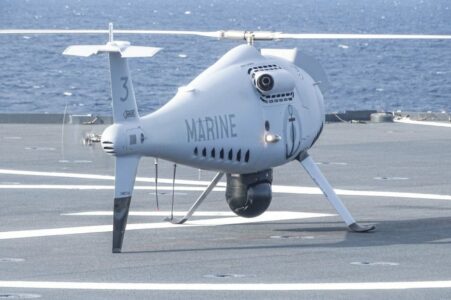
Click to see the full-size image
The S-100 UAV can fly in automatic or remotely controlled mode. In case of loss of communication, regardless of the control mode, the device automatically returns to the starting point. The permissible wind speed during takeoff and landing is 46 km / h. The side suspension assemblies are designed for an external load of up to 10 kg each. They can carry two guided missiles LMM (Light Multirole Missile). With the installation of additional fuel tanks, the duration of the flight of the device can reach up to 10 hours.
One of the competitors of the S-100 “Camcopter” may be the AWHERO unmanned helicopter. It is currently being developed by specialists from the Leonardo Corporation. Due to its small size, the device can be included in the armament of ships with a small displacement. Its main purpose is to conduct aerial reconnaissance. The first flight of the AWHERO pre-production UAV took place in December 2018.
It is planned to develop several variants of the payload for the vehicle. The main ones will include an optoelectronic surveillance system and a Gabbiano radar station. Additional sets – relay equipment, radio and electronic reconnaissance, automatic shooting (for example, hydroacoustic buoys) and other equipment.
The means of communication and data exchange installed on the vehicle will ensure the receipt of control commands and the transfer of information from the onboard systems to the ship at a distance of up to 180 km. They will also allow the crews of NH-90, AW-159, AW-101 helicopters to fly AWHERO UAVs and receive video images from the surveillance system.
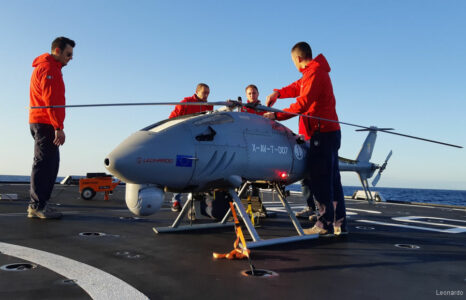
Click to see the full-size image
Currently, the AWHERO apparatus is offered by the developer within the framework of the European strategic initiative “Ocean-2020” (OCEAN – Open Cooperation for European mAritime awareNess). It provides for: coordination of research and development work, increasing cooperation between the national Armed Forces and the military-industrial complexes of the EU countries. The timing of the adoption of this UAV into service has not been determined.
Large and heavy unmanned vehicles of the third class are mostly represented by helicopters. Moreover, these are unmanned modifications of manned aircraft.
As of 2020, the vast majority of this type of equipment was in the fleet of unmanned aircraft of the US Navy. These are mainly the UAVs MQ-8B and C “Firescout” of the “Northrop-Grumman” company, designed to search, detect and recognize ground and surface targets, issue target designation to ship weapon systems, as well as for relaying communication signals. They can be used to support search and rescue operations and transport cargo.
The current plans of the command of the US Navy provide for the purchase of 63-64 UAVs “Firescout” of both modifications – 30 MQ-8B and 33-34 MQ-8C.
The multipurpose UAV MQ-8B “Firescout” was developed on the basis of the “Schweizer-333” helicopter and has been in service with the US Navy since 2010. The device is included in the armament of ships of the coastal sea zone. The first MQ-8B UAVs were deployed on the Freedom-class LCS-3 Fort Worth frigate in 2014. The complex includes three UAVs, a control station and auxiliary equipment.
The main reconnaissance equipment is the AN / AAQ-22D optoelectronic system. The possibility of equipping the machine with a small-sized circular-view radar AN / ZPY-4 is being considered. For the device, easily removable side pylons have been developed, on which, in addition to aircraft weapons, containers can be placed for loading ammunition, medicines, food and other cargo. The armament (maximum bomb load 160 kg) may include AGM-114 Hellfire anti-tank guided missiles, APKWS guided missiles, Bat and Viper Strike homing ammunition, and air-to-air Stinger missiles.
Basic UAV performance characteristics:
*In 1998, Insitu, together with the University of Washington, demonstrated the potential capabilities of the Aerosonde, named Laima, by successfully completing the world’s first transatlantic flight (from Newfoundland to Scotland). At the same time, according to the developers, it took 5.6 liters of gasoline to overcome 3,700 km.
*It was operated on 14 types of ships, from a fishing schooner with a length of 18 m (“Shackleton”) to a forward-based vessel with a length of 277 m (“Stockham”).
(The ending follows)



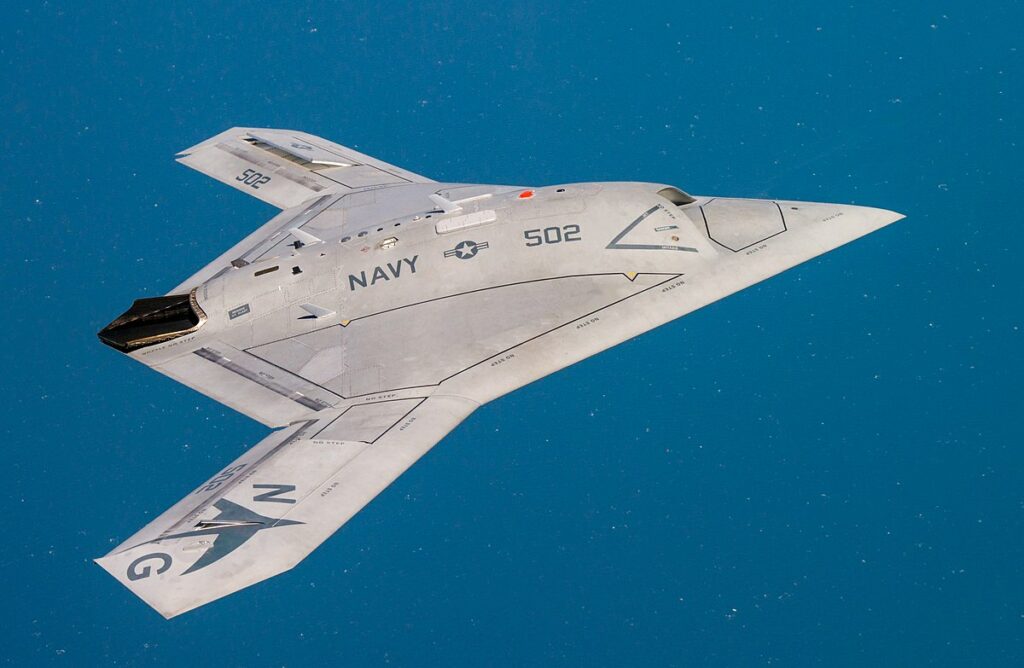

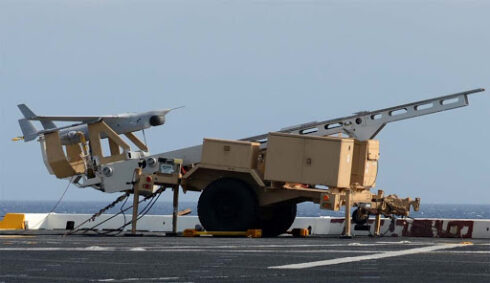
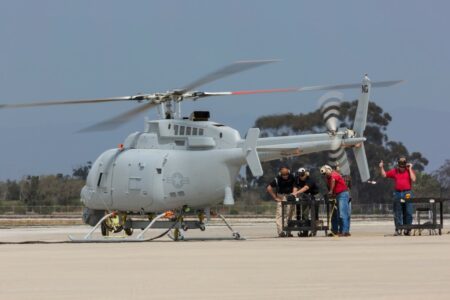
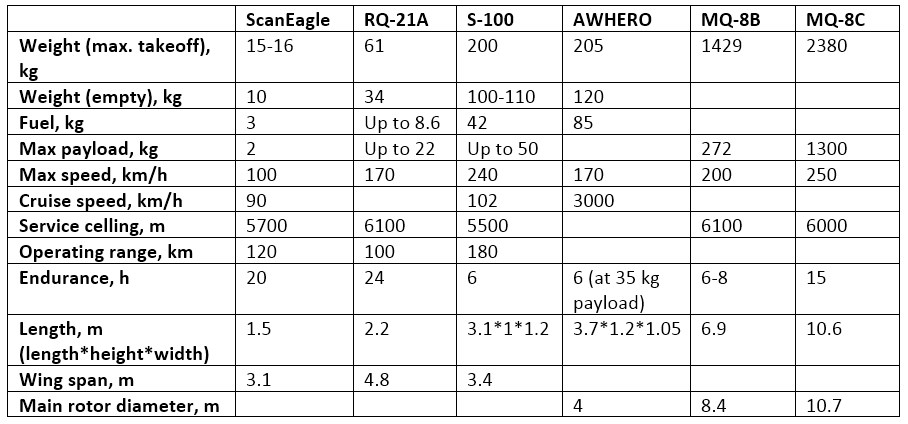



Four Russian warships sailed for Syria. Exercise or impending attack?
These boats are the corvette Boikiy and the three landing warships Kaliningrad, Korolev, and Minsk….
the four warships have headed for the eastern Mediterranean in the direction of Syria. Currently, several submarines of the Russian Navy armed with Caliber cruise missiles locate there.
https://bulgarianmilitary.com/2021/03/27/four-russian-warships-sailed-for-syria-exercise-or-impending-attack/
https://bulgarianmilitary.com/wp-content/uploads/2021/03/Four-Russian-warships-sailed-for-Syria.-Exercise-or-impending-attack.jpg
Probably bringing in supplies and new troops for deployment.
Yep.
But new troops is maybe right moment for new, fresh punitive interventions…
Since their “peace agreement” with Turkey, floats between Turk pretending in imposing some non terrorist control of Idlib and Russian pretending that they didn’t have other choice but to punish terrorist for breaching of peace agreement.
It is actually just proxy war in VERY slow motion…
Analyzing Russians is complicated as they play by their own rules and also pursue Multiple goals. It is tough to understand their end goal and their timelines. Nonetheless, I posit several possibilities
1. Resupplying the SAA, (which is the most likely), including in light of Turks action against SDF
2. Supplying their positions in North of Euphrates and hence boosts SAAs freedom of action
against Emboldened SDF.
3. Expanding and resupplying Tartus and Hmeimim
3. Exercises
4. impending attacks (Particularly unlikely as Russians are unlikely to perform a landing operation. they have so far limited their involvement to are support, advisory and special operation)
Yes Russia is “pursuing Multiple goals”. Playing one global game, translated into the actions in local conflicts.
Since everybody is watching their moves they try not to be too transparent in their plans and intentions.
Yeah, resupplying the SAA, by sending some new tanks to SAA. Since by ship is less costly.
Bringing some new weapons for testing…The list probable of all is “exercises”..
# 4 Impending attacks.
Lebanon is in crisis, France, Turkey or Israel may have plans to create a false flag in order to intervene. Russian Intel. is well connected and may have been forewarned. Stability through strength.
This map clearly shows who is the aggressive hostile brutal warmonger, and who is a peaceful innocent nation only wanting to make peace and freedom.
There is no freedom in any of cias objectives,infact soon you will be banned from putting just an aftermarket exhaust system or air cleaner on your cars as well!
Fk that for a fascist joke (freedom) what freedom these days free from the lgbtqrx?
Go into comedy , clown , you are a natural .
Good to see the russians in close proximety to their orthodoxy allies,fook the cia!
It is going to cost only one hundred trillions of US dollars per unit..
Many of these projects have already failed.
Hollywood will bring the failed US projects to life, as the majority of Western muppets will think its reality. :)
Did I mention the US flag fluttering in the wind during the US manned moon landing. :)
Generally the ones which don’t boast beyond developments are the succesfull variants.
https://uploads.disquscdn.com/images/8fdf435a26a803186c6c9c0826f9d5ceb077e2ffa3a1b789e70fe0f1ee97395b.png
https://uploads.disquscdn.com/images/7d1831e0b19f606c9075e6b464c206b9b8049957e809dcd8b93553342174918c.png https://uploads.disquscdn.com/images/340660ca12974babe399b4c0b7d5920c3942378fc188d52870aaf3714cdc712b.png
These are the final items necessary to complete the AR-15 rifle build parts kit that I’m working on. For the gunsmith to do the preliminary weapon system build.
I’m researching additional parts for a more advanced SPR/PDW special purpose riflepersonal defense weapon. To upgrade the parts kit prior to having the gunsmith do the build.
The additional features are a manual, and possibly voice, recoil activated gun video camera. And a recoil suspension stock with an internal dual spring sliding counter weight damping mechanism. To improve auto loading fire management. To be able to get on target and stay on target with follow up shots. To lower the recoil impulse.
Top mount gun camera.
https://uploads.disquscdn.com/images/beed749f2b08b736eb64de0a5284812a5192a182aacea770168fa23d286399c8.png
https://youtu.be/9I7839eB1ao
Recoil management mechanism.
https://uploads.disquscdn.com/images/ee66a05fada4c711f45f88fc1351272bf9cd5c11155f60cd975399d1494027f4.png
https://uploads.disquscdn.com/images/e89ccaf9206a89f12cf2fed8e02946b19a05c700983cf5a82132db73e6d18553.png
https://uploads.disquscdn.com/images/8fdf435a26a803186c6c9c0826f9d5ceb077e2ffa3a1b789e70fe0f1ee97395b.png
https://uploads.disquscdn.com/images/7d1831e0b19f606c9075e6b464c206b9b8049957e809dcd8b93553342174918c.png https://uploads.disquscdn.com/images/340660ca12974babe399b4c0b7d5920c3942378fc188d52870aaf3714cdc712b.png
https://uploads.disquscdn.com/images/c0aae3afdcdf5e9acda50f49f52ccba6d996787166c978ea5b142eca86a5a413.png
Overpriced junk.